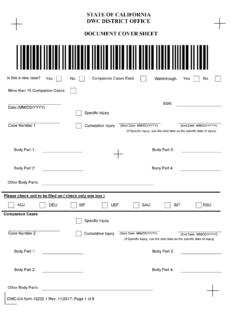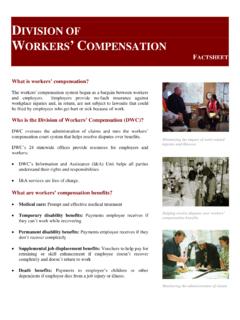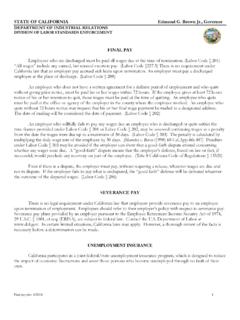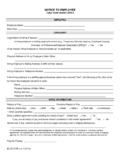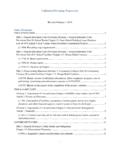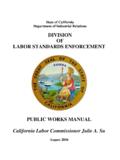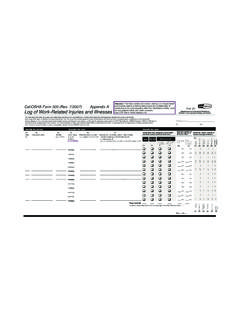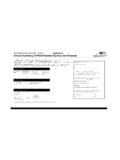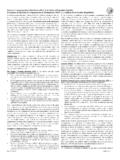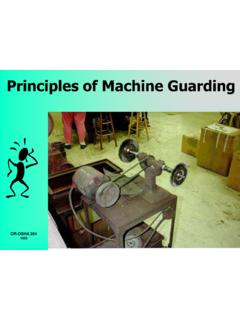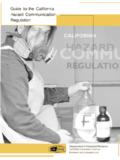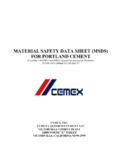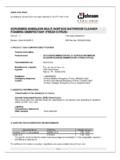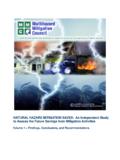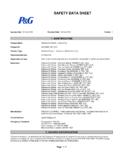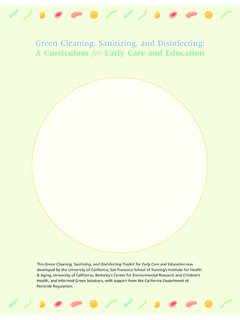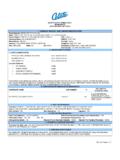Transcription of 0-Front cover (Converted)-3 - California Department of ...
1 CAL OSHA ISIT SAFE TO ENTER A confined space ? confined space GUIDE Reviewed/Updated May 2012 CaliforniaDepartmentofIndustrialRelation s Cal/OSHA Consultation Service Research and Education Unit ii Publishing Information The confined space Guide was developed by the Educa- tion and T raining Unit, Cal/OSHA Consultation Service, California Department of industrial relations . The document was published by the California Department of Education, 721 Capitol Mall, Sacramento, California (mailing address: Box 944272, Sacramento, CA 94244-2720). It was distributed under the provisions of the Library Distribution Act and Government Code Section 11096.
2 1998 by the California Department of Education All rights reserved TABLE OF CONTENTS Acknowledgments .. v Regulatory Requirements .. 1 Introduction .. 2 Fatal Facts .. 4 Rescue .. 5 Eme rgency .. 6 Self -Rescue, Non-Entr y, and Entry Rescue .. 7 Rescue Training and Plan .. 8 On-Site Rescue Team vs. Off-Site Rescue Team .. 9 Rescue Equipment .. 11 Definitions and Basics .. 13 General Terminology .. 14 confined space ; Immediately Dangerous to Life or Health (IDLH); Permissible Exposure Limits (PEL); Entry Permit Evaluation .. 17 Permit-Required vs. Non-Permit confined space ; space Reclassification; Alternate Procedures; Permit-Required confined space Program (Hot Work and Host Employer-Contractor) confined space Hazards .. 24 Atmospheric Hazards .. 25 Oxygen Deficiency/Enrichment; Combustible/Flammable/Explosive Gases and Vapors; Combustible Dust; Toxics; Material Safety Data Sheets (MSDS); Monitoring-Air Sampling and Equipment Physical Hazards.
3 33 Mechanical; Entrapment; Engulfment; Other Types of Hazards Hazard Controls .. 35 Controls for Atmospheric Hazards .. 36 Ventilation; Respiratory Protection; Other Control Measures Controls for Physical Hazards .. 38 Isolation (Mechanical, Electrical, Pressurized Lines, Ducts, or Pipes); Other Control Measures Personal Protective Equipment and Tools .. 40 Communication System .. 41 iii Table of Contents Training and Education .. 42 Entry Team .. 44 Supervisor; Entrant; Attendant Frequently Asked Questions .. 47 Attachments .. 53 A Hot Work Permit Sample .. 53 B Atmospheric Monitoring Equipment and General Testing Protocol .. 54 C confined space Entry Permit Sample .. 57 D Material Safety Data Sheet Sample .. 58 E Setting Up a Permit-Required confined space Program.
4 60 F Permit-Required confined space (PRCS) Decision Flow Chart .. 62 References .. 63 Evaluation .. 65 Cal/OSHA Consultation Service Offices .. Back cover iv ACKNOWLEDGMENTS Writing and editing Editorial review Peer review Preliminary layout and design Draft document preparation Zin Cheung, Cal/OSHA Consultation Service, Education and T raining (E & T) Unit, Sacramento, CA Mary Grace Delizo, Cal/OSHA Consultation Service, San Diego, CA The authors wish to thank the following persons for their review, comments, and support in the development of this document. Michael Alvarez, Cal/OSHA Consultation Service, E & T Unit, Sacramento, CA Bob Barish, Cal/OSHA Consultation Service, San Francisco, CA Kent Freeman, Roseville Fire Department , Roseville, CA Walter Graze, Asbestos Contractor Registration Unit, DOSH, San Francisco, CA Dan Leiner, Cal/OSHA Consultation Service, Santa Fe Springs, CA Paul R.
5 Burnett, Consultant/Trainer, Morgan Hill, CA Mario Feletto, Cal/OSHA Consultation Service, E & T Unit, Sacramento, CA Karen Fruin, JMD & Associates, San Diego, CA Vicky Heza, Cal/OSHA Consultation Service, Anaheim, CA Mary Jo Jensen, Cal/OSHA Consultation, Sacramento, CA Debra Mital, Bioenvironmental Engineering Services, McClellan Air Force Base, Sacramento, CA Robert C. Moats, Environmental and Occupational Risk Man- agement, San Jose, CA Steve Smith, Cal/OSHA Standards Board, Sacramento, CA George Solano, City of V ista, Waste Water Division, San Diego, CA Jack Oudiz, DOSH Professional Development and Training, Sacramento, CA Bernadine Osburn, Cal/OSHA Consultation Service, E & T Unit, Sacramento, CA v Titles, names, and affiliations were current at the time the document was developed.
6 U REGULATORY REQUIREMENTS NDER the California Labor Code and the California Occupational Safety and Health Act of 1973, all employ- ers in California have the legal obligation to provide and maintain a safe and healthful workplace for employees. The general requirements for employers to provide an effective Injury and Illness Prevention Program are in T itle 8 of the California Code of Regulations (T8 CCR), Section 3203. The specific confined space regulatory requirements are in T8 CCR, Artic le 108, sections 5156 through 5158. Because con- fined space work may involve many different hazards, other regulatory requirements may also apply. Section 5156 Identifies operations and industries that are regulated under Sections 5157 and 5158. Section 5157 Applies to industries not covered in Section 5158.
7 It contains requirements for practices and procedures to protect employees from the hazards of entry into permit-required confined spaces. Section 5158 Applies specifically to construction, agriculture, marine terminals, grain handlings, telecommu- nication, natural gas, and electric utilities. Note: Shipyard operations are regulated by Section 8355 To obtain a free copy of the Injury and Illness Prevention Pro- gram or the confined space standard, or for more information on these requirements, please call the nearest Cal/OSHA Consulta- tion Service Office listed on the la st page of this publication. Employ ers needing on-site consultation may also call the Cal/ OSHA Consultation Service Office for free professional a ssis- tance. Cal/OSHA consultants advise employers of any changes needed to eliminate potential and existing hazards.
8 Consultants do not partic ipate in enforcement activities. When hazards are identified during an on-site consultation visit, consultants do not issue citations or penalties. 1 California has a confined space requirement since the 1970s. When the federal final rule was published in 1993, section 5157 was revised to be as effective for those general industries covered by the federal final rule. In 1993, the pre-existing California requirements were retained in section 5158 for those industries not covered by the federal final rule. INTRODUCTION Note THIS confined space Guide has been developed to explain the hazards of confined space work and to assist employ- ers in establishing and maintaining an effective confined space program. By implementing such a program, both employ- ers and employees will be able to: Recognize, evaluate, and control confined space hazards.
9 Save lives and protect employees from job-related injuries and illnesses. Promote safe and effective work practices. Reduce preventable workers compensation losses. Comply with the law. The confined space Guide contains information, definitions, and requirements for entry into permit-required confined spaces (S ection 5157). To call the attention of employers whose opera- tions and industries are regulated under Section 5158, the con- fined space definition and requirements are distinctively high- lighted. To clarify and facilitate the understanding of confined space issues, the guide presents the information in the format of questions and answers and includes a list of the most frequently asked questions. For easy reference, the guide is separated into six distinct main sections: Rescue, which addresses questions about various types of rescue operations, rescue training, and equipment, along with the importance of well-planned rescue activities.
10 Defin itions and Basics, which contains essential definitions of terms such as confined space , immediately dangerous to life and health (IDLH), and the permissible exposure limit (PEL). This section also addresses entry issues and issues rela ting to permit evaluation (including permit-required confined space reclassifi cation, alternate procedures, and hot work permits). confined space Hazards, which addresses specific atmo- spheric and physica l problems that can be encountered when working in confined spaces as well as questions relating to Materia l Safety Data Sheets and atmospheric te sting. 2 Note for Section 5158 Employers Note Implementing a permit-required confined space program in accordance with section 5157 shall meet the requirements of section 5158. Introduction Hazard Controls, which addresses means of preventing accidents and controlling other problems by eliminating or controlling confined space hazards.
